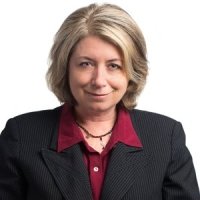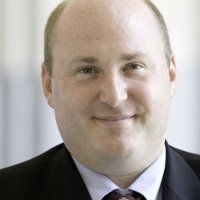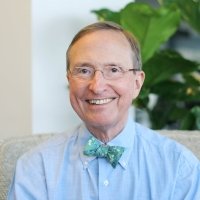What’s Next? Celebrating 20 Years of the Environmental Change and Security Program
Global crises like the Ebola outbreak force us to consider what “security” really means, said Sharon Burke, senior advisor for the New America Foundation. “Is security getting our kids to school and food on the table…or are you talking about military security and defense threats that require a weapon to counter?”
Since its founding in 1994, the Wilson Center’s Environmental Change and Security Program has been a public forum for debate over non-traditional security issues and the connections between global environmental, population, health, and security dynamics. On September 18, Burke joined New York Times columnist Andrew Revkin and a panel of current and former ECSP leaders to discuss how the field has evolved over the last 20 years and offer their thoughts for what lies ahead.
Changing the Equation
“In the Pentagon, we knew what we were in the Cold War; we knew what our job was, and we knew what our focus was,” said Burke, who was the first assistant secretary of defense for operational energy plans and programs. “But once that went away and the ‘what are you solving for’ became a more complicated question, the answer became more complicated.”
In the 1980s and early 1990s, some researchers and experts began to call for an expanded definition of security that moved beyond state-centered notions of military and economic might to encompass a broad range of human and environmental factors. Disparate schools of thought began to focus on the nexus of environment, population, and security dynamics, leading to both groundbreaking research and contentious debates. New questions emerged about how resource scarcity and population dynamics might contribute to instability and conflict – and what should be done about it.
Before this, there had been little cross-pollination between the natural and political sciences, said P.J. Simmons, founding director of ECSP and current chairman of Corporate EcoForum. “I got this tremendous education in international affairs, and I don’t think anybody mentioned the environment once in four years,” he said.
Burke, who “cobbled together” her own master’s program in international energy policy, came to Washington to work on energy security after graduating. “But there wasn’t anywhere to do that,” she said. “The question was, ‘why would you care about that?’”
When Simmons read then-Senator Al Gore’s 1992 book, Earth in the Balance, “it was just like somebody took a two-by-four and smacked me in the head.”
These issues of environmental change and demographic change – what’s been happening, what is happening, and what’s going to happen – are going to profoundly affect everything we care about in the human agenda.
Other early thought leaders included Jessica Mathews, Thomas Homer-Dixon, and Robert Kaplan, said Simmons.
Bridging Divides
“There were a lot of different people – in government, outside of government, in think-tanks, in academia – talking about the connections between environment, population, and security in very different ways, using different terms,” said Simmons. “There was a lot of clear analytical thinking, and there was a lot of sloppiness, frankly.”
To create a “safe space to bring people together to talk about these issues and their relevance to each other, and have those honest conversations,” Simmons approached the Wilson Center, where he had worked previously, and the Environmental Change and Security Program was born.
Simmons and Geoff Dabelko, who helped found ECSP and later directed it for 16 years, purposefully avoided “environmental security” in the program’s name. The term “kept getting thrown around in a thousand different ways,” Simmons said, and “we wanted to really make this about the connections between all these issues, not just the security of the environment.”
“The truth is, there’s not always a military answer to a security challenge,” said Burke. “And I think that’s where the evolution of [ECSP] has been very interesting.”
Complex global challenges are too often “defined in one box,” said Dabelko. He and Simmons designed ECSP to break down the barriers between sectors that limit understanding and impede progress.
“If you really want to talk to somebody, it’s much better to learn their language than try and teach them yours,” said Thomas Lovejoy, who also helped found ECSP and is now a senior fellow at the United Nations Foundation and a professor at George Mason University.
“Then What?”
Today, the military and security communities have a much better grasp on how environmental and population dynamics affect their work, said Burke. This is reflected in key strategic reports like the Quadrennial Defense Review and the Global Trends 2050 report from the National Intelligence Council.
But as the challenges evolve, so must the responses.
“We’re getting better at describing the interconnections and understanding how these things are all linked, [but] we’re still not very good at addressing them in this integrated fashion,” said Dabelko, who currently directs the environmental studies program at Ohio University.
“It’s the ‘then what’ that gets more complicated,” Burke said. A military commander may recognize climate change as a security threat, but “what’s his responsibility to deal with it and counter it?”
When it comes to population dynamics, “we’ve really progressed as a field, not just in terms of our analytical lens and thinking of different scenarios, but in terms of very concrete policy prescriptions,” said Roger-Mark DeSouza, the current director of ECSP. “We know what works.”
USAID and other development organizations have focused their efforts to address population growth on reproductive health services and women’s empowerment, following the rights-based approaches agreed upon by the international community at the landmark 1994 International Conference on Population and Development.
Bridging sectoral divides is crucial when it comes to population and gender, which are too often pigeonholed as “health” or “women’s” issues, said Carmen Tull, a public health advisor in USAID’s Office of Population and Reproductive Health.
ECSP has successfully made the case that issues of population dynamics, family planning, women’s empowerment, and gender are really critical to the environment and to security – and they’ve done this across policy audiences.
Tull recounted a recent workshop where she was “shocked” to see representatives from the Pentagon advocating for measures to address early marriage and high fertility rates in the Sahel in order to build resilience.
“We’ve learned through programming over the years of our population-health-and environment programs that when we look at these issues in integrated ways, when we bring family planning to communities that live in areas where biodiversity is threatened, overall we see improved health outcomes, and we see that we’re building more resilient communities,” said Tull.
Policy vs. Politics
Looking forward, climate change presents an urgent threat to both current and future generations, said De Souza, and building resilience to it must be prioritized. “This is not an academic exercise; this is a critical intervention.”
More and more governments and aid organizations are looking to create resilience programs, which seek to reduce social and physical vulnerability to shocks and stressors like climate change. Other “transformative” interventions like environmental peacebuilding, increasing women’s access to family planning, and bridging the gap between development and humanitarian assistance, can spur significant progress on entrenched problems, said De Souza.
Some of the world’s most persistent development problems have relatively simple technical solutions, like clean cookstoves, said Revkin. “We’re always about the leading edge and the next technology, and not about doing the stuff that could really accelerate progress in the poorest parts of the world,” he said, citing Daniel Kammen’s work in the 1990s on “mundane science.”
The good news is “the ability to share and shape ideas has never been greater,” said Revkin. In the past, “it was the weight of the paper that was the strength of the argument,” said Dabelko. Now, you can get people’s attention with only 140 characters, draw them to a blog post, and ultimately entice them to read a full report.
But the current political atmosphere in the United States poses a challenge, said Burke. “If you have this brittle, inflexible, and rigid political system that’s not adapting and not moving, where does that leave us?” Failing to respond appropriately to today’s multi-faceted, systemic threats not only hurts America but also undermines its role in the global community, she said.
“I don’t know whether the United States will be leading the discussion in 20 years at this rate,” said Simmons. Our scientific and economic understanding of climate change exceeds our political capacity to deal with it, he said.
Improving the situation will require “sort[ing] out the grain from the chaff in the media” and “get[ting] anonymous money out of the political system,” said Lovejoy. “And then, having done that, maybe we can do the things we need to do, which is have integrated planning and integrated management.”
“The time frame in which we have the chance to really make a difference is now, I think, quite clearly, very short.”
Event Resources:
Drafted by Moses Jackson, edited by Schuyler Null and Meaghan Parker.
Speakers

Founder and President, Ecospherics

Professor and Associate Dean, George V. Voinovich School of Leadership and Public Affairs, Ohio University; Associate Senior Fellow, Environment of Peace Initiative, Stockholm International Peace Research Institute

Vice President, Sustainable Markets, Pact

Hosted By

Environmental Change and Security Program
The Environmental Change and Security Program (ECSP) explores the connections between environmental change, health, and population dynamics and their links to conflict, human insecurity, and foreign policy. Read more
